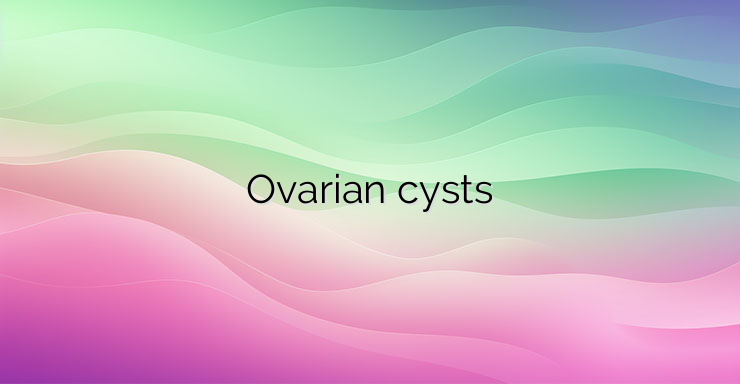Ovarian cysts are classified as benign tumors because they cause an increase in the ovary. They are common in older women. A cyst in an organ is a space bounded by a capsule that is filled with fluid. In women, there are several types – follicular cysts, endometriotic cysts, luteal cysts and corpus luteum cysts. 1. Follicular cysts Follicular cysts are common in women in adulthood. Follicles in the ovaries develop through the process of folliculogenesis, which lasts about 3 months. Follicles that have not started their development are called primordial. Each month, between 50-60 follicles go into proliferative follicles and increase in size. One of them, having reached the final stage of development during ovulation, bursts and releases an ovum ready for fertilization, and the others undergo reverse development. An unruptured follicle or follicles that have not undergone reverse development may be the cause of the formation of follicular cysts. They are the result of disturbances in the levels of hormones that affect the processes in the ovaries. In order to define a given formation as a cyst, it is necessary that its dimensions are more than 3 cm in diameter. They are most often formed in women with a regular monthly cycle, in which there were temporary disturbances. In rare cases, they may be found in postmenopausal women or in newborns as a result of increased levels of maternal hormones that have passed in utero to the fetus. Follicular cysts can be single or multiple. They are located on the outside of the ovary and are thin-walled structures filled with watery or pale yellow fluid. Very often, follicular cysts are asymptomatic and are detected during a routine gynecological examination using an ultrasound. Complaints that are not specific but suggestive of the given diagnosis are pain and discomfort in the lower abdomen. Because some of these cysts can form and release estrogens, they can affect a woman’s monthly cycle. Such changes are an increase in the duration of menstruation, as well as the presence of bleeding outside the monthly cycle. NEWS_MORE_BOX The thin wall of the cyst can cause it to burst, which is accompanied by pain and discomfort. A rare complication resulting from a ruptured follicular cyst is intraperitoneal hemorrhage. Most often, after the presence of a follicular cyst is detected, no treatment is undertaken, the condition requires monitoring, because after 2-3 months it can spontaneously undergo a reverse development. If necessary, contraceptives can be taken in order not to increase the size of the cyst and not to form new ones. 2. Endometriosis cysts Endometriosis cysts of the ovaries are also referred to as chocolate cysts. Endometriosis is the presence of endometrial tissue outside the uterine cavity, which functions under the influence of ovarian hormones. In about 30% of cases of genital endometriosis, the ovaries are affected.Endometriotic cysts are located deep in the ovary. They can form in one or both ovaries, and the color of the cyst is dark to black because they are filled with blood. Their sizes vary from small cysts 1-5mm. in diameter, up to large cysts with a diameter of 10 cm. The course of endometriotic cysts is most often asymptomatic. Symptoms characteristic of endometriosis, such as pain during menstruation, may be observed or discovered in the process of determining the cause of infertility. Due to adhesions in the region of the ovaries and fallopian tubes, the passage of the ovum to the uterine cavity becomes difficult. Treatment in the presence of endometriosis cysts most often requires both drug therapy and surgery.


Leave a Reply